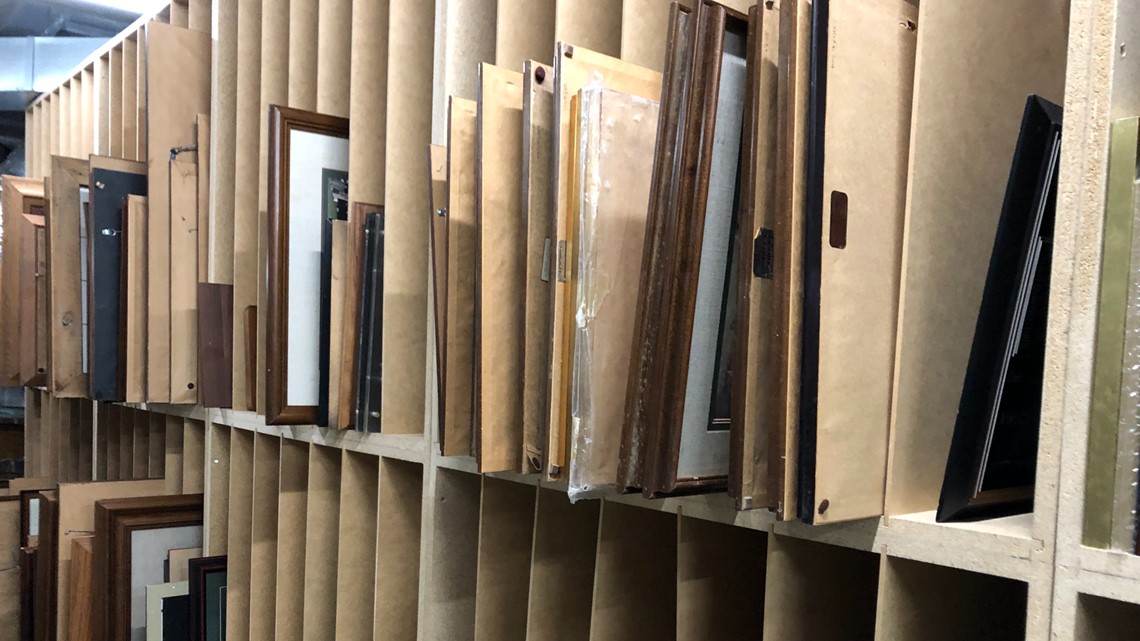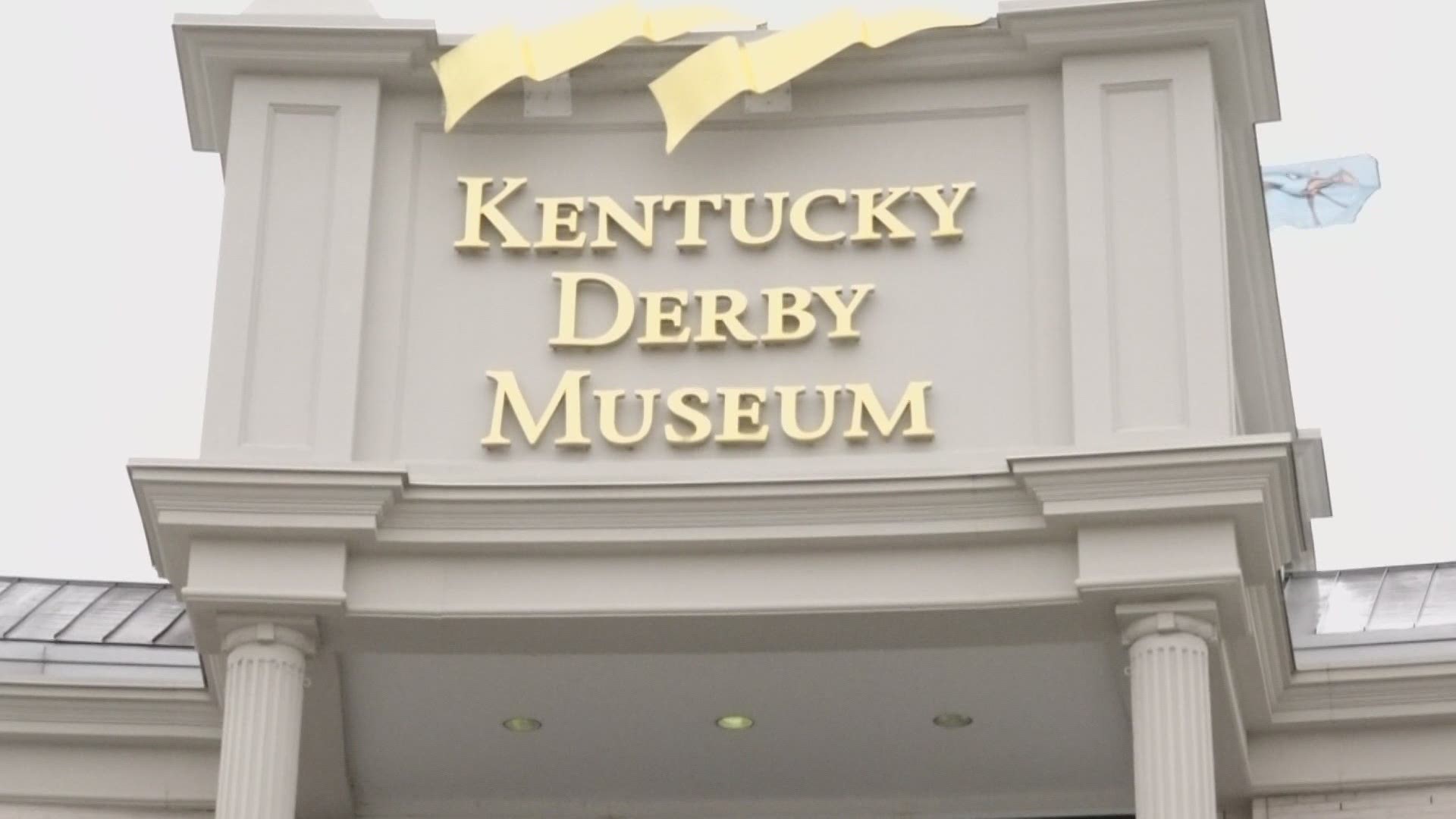LOUISVILLE, Ky. — The Kentucky Derby Museum gets hundreds of thousands of visitors every year. People from across the country come to view hundreds of artifacts on display, but what they might not realize is that what they're seeing is just a fraction of the items in the museum's possession.
About 5% of the artifacts in the building are available for public viewing at any one time. The rest of the collection lies underneath the museum in the "vault" - with more than 10,000 items in storage.
Keeping all of those artifacts protected and accounted for is part of Chris Goodlett's responsibilities. He's worked at the museum for nearly 20 years in a variety of roles.
Goodlett and his team have a large and growing collection to choose from when they're putting together the exhibitions on display.
The Kentucky Derby Museum received a large collection from its predecessor, the Churchill Downs Museum, when it opened in 1985. Since then, they have received several more artifacts, mostly from donations.
This collection includes trophies, awards, programs and a complete collection of a classic Kentucky Derby staple - mint julep glasses.
"Each one has a unique story," Goodlett said.
Now, those 10,000+ unique stories take up a lot of space. Below the beautifully crafted and curated exhibits found in the upper floors of the Kentucky Derby Museum is the vault - chock full of Derby artifacts and archives.
What the vault lacks in beauty, it makes up for in utility.
"I wouldn't say it's visually impressive. It's not designed to be," Goodlett said.
Every item in the vault is documented and logged into a searchable database. That way, when it comes time to put together an exhibition, it's easier to find the right items in a timely manner.


The underground vault doesn't just keep the artifacts locked away from potential thieves, it also protects these precious items from the climate. Maintaining a consistent temperature and humidity isn't easy in the Ohio Valley, but it's important in making sure the history of the Derby stays pristine.
"If something's very old - and we have items going back to the late 19th century - sometimes items might be very fragile and they might not be in a condition to sustain exhibition for long periods of time. so we've got to consider that," Goodlett explained.
While Goodlett and his team love creating exhibits with the museum's existing inventory, they said the best part of the job is discovering new items and hearing their stories straight from the source.
"I think the favorite part of the process is meeting the people and finding the story behind the items," Goodlett said. "Items can be beautiful and special, but it's the story behind the item that makes it relevant to us on the curatorial team, that makes it relevant I think to the audience."
Contact reporter Rob Harris at rjharris@whas11.com. Follow him on Twitter (@robharristv) and Facebook.
Make it easy to keep up-to-date with more stories like this. Download the WHAS11 News app now. For Apple or Android users.
Have a news tip? Email assign@whas11.com, visit our Facebook page or Twitter feed.

